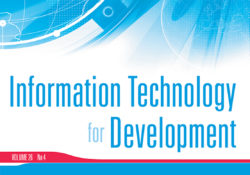tandfonline.com – InfoInternet for education in the Global South: A study of applications enabled by free information-only internet access in technologically disadvantaged areas
tandfonline.com har udgivet en rapport under søgningen „Teacher Education Mathematics“: Abstract This paper summarizes our work on studying educational applications enabled by the introduction of a new information layer called InfoInternet. This is an initiative to facilitate affordable access to internet-based information in communities with network scarcity or economic problems from the Global South. InfoInternet develops both networking solutions as well as business and social models, together with actors like mobile operators and government organizations. In this paper we identify and describe characteristics of educational applications, their specific users, and learning environment. We are interested in applications that make the adoption of Internet faster, cheaper, and wider in such communities. When developing new applications (or adopting existing ones) for such constrained environments, this work acts as initial guidelines prior to… Continue Reading
